Chicken (Kou Shui Ji 口水鸡) is one of the typical Sichuan dishes. Its exotic name in Chinese characters – 口 – mouth, 水 – water, 鸡 – chicken, suggests that it is an unusual taste experience. In English, we often come across the term “Saliva Chicken,” which is no coincidence, because this dish is really extremely tasty and makes you feel like your mouth is salivating. In Czech Chinese restaurants, it can hide under many different names, but the most common is “Szechuan chicken in red oil sauce.” Probably the most appropriate name for this dish could be “Chicken that makes you drool”. However, this does not change the fact that it is one of the most famous Sichuan dishes and is one of the most popular in Sichuan restaurants in China. It is popular at celebrations and family gatherings and symbolizes hospitality and the joy of good food.
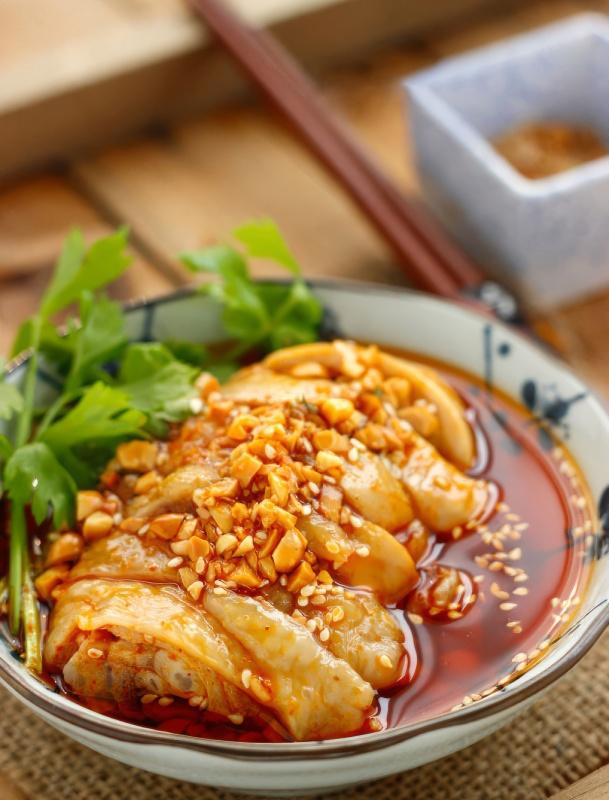
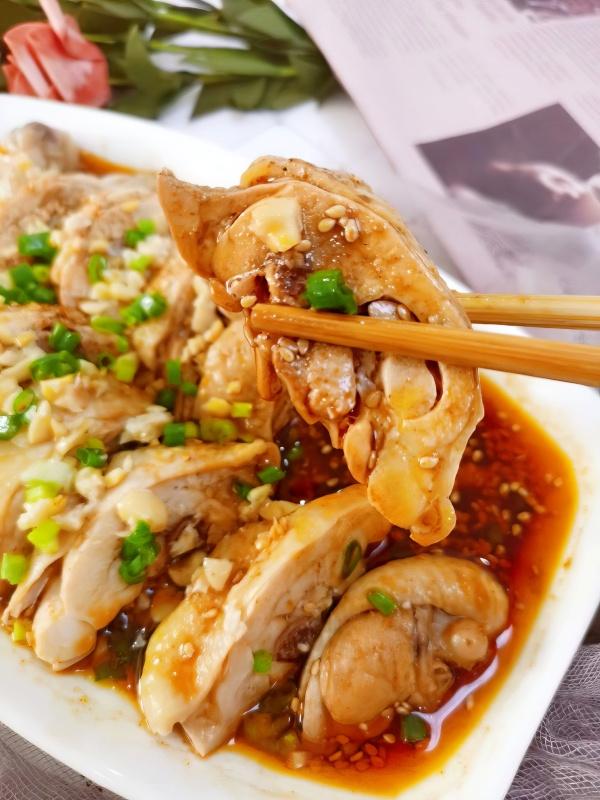
The origin of the authentic name
The name comes from the Chinese man of letters Guo Moru . Before this dish was known by this name, people in Sichuan generally called it spicy chicken, or pepper chicken. Guo Moruo, a modern Chinese literati, once wrote in his poem “Ji Bo Qu 賟波曲”, “The white sliced chicken I ate in my hometown of Shawan when I was a boy, the white pieces of meat and the hot and hot pepper, still now I’m drooling…” Among the locals, the name caught on and spread further.
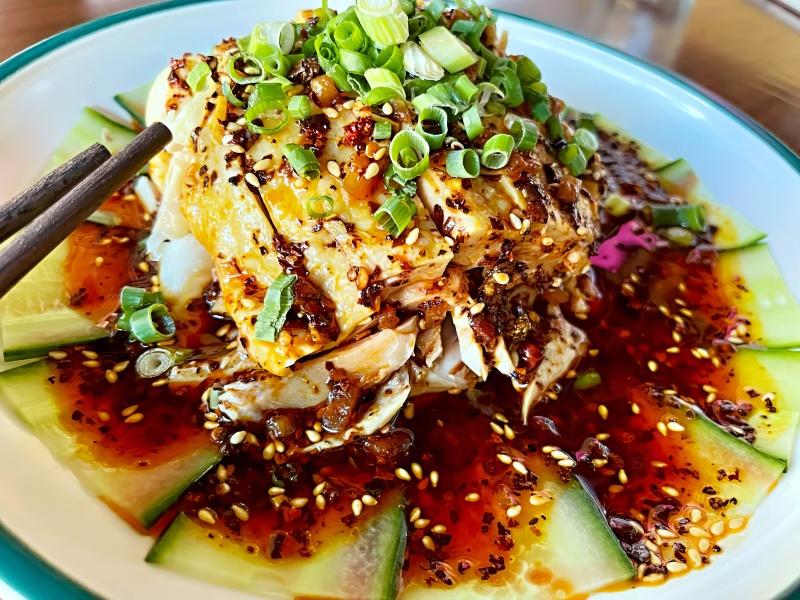
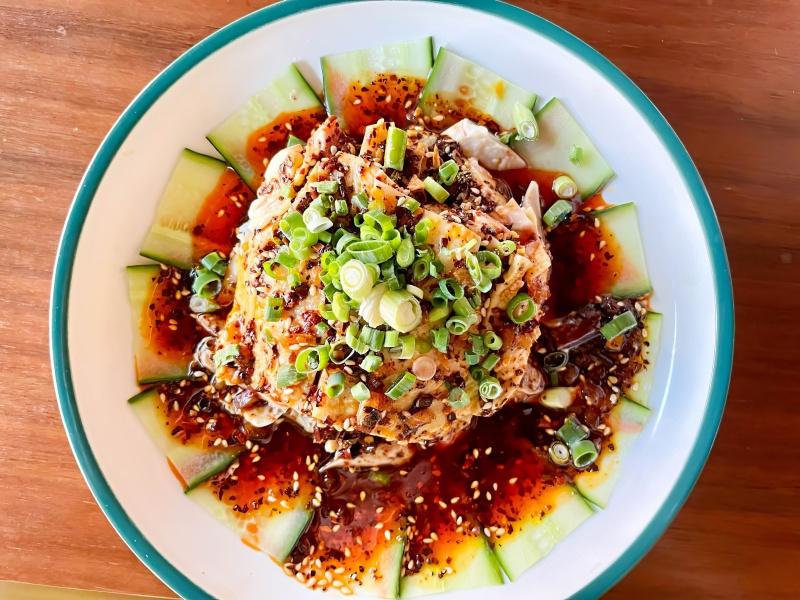
Chicken (Kou Shui Ji 口水鸡) is a cold dish in traditional Sichuan cuisine, made from boiled chicken and chili oil . It’s a very creative dish with a lot of emphasis on the flavors of the different ingredients. Chili peppers are sometimes added to make the food even more spicy.
After cooking, soak the chicken in ice water. Refrigeration will prevent the chicken from cooking further and thus overcooking it. In addition, it tightens and tightens the skin beautifully. Chili oil , the essential component of this dish, balances the perfect balance of spiciness. Roasted and crushed peanuts, on the other hand, add a crunchy texture to the dish, while softening the mouth-burning spiciness. A traditional, authentic recipe calls for a whole chicken, served skin-on and bone-in. I use chicken legs in the recipe instead. Chicken thighs are a good choice as they are tender and tasty cuts of chicken. For the convenience of diners, I usually remove the bone before slicing. Feel free to adjust the recipe to your own preferences.
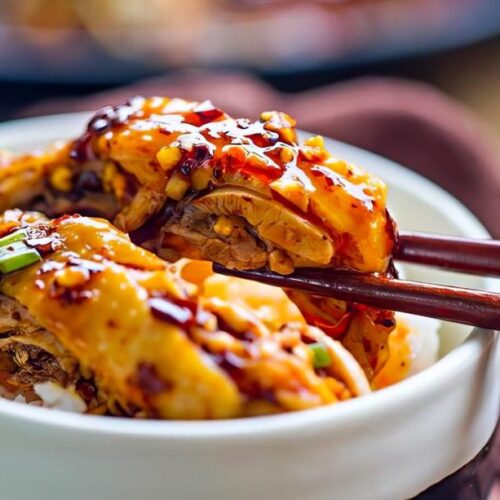
Kuře v omáčce z červeného oleje (Kou Shui Ji 口水鸡)
Ingredients
Vaření kuřete
- 500 g kuřecích stehen
- 2 lžíce rýžového vína ShaoXing
- 4 plátky zázvoru
- 2 ks jarní cibulky
Omáčka
- 4-6 lžic chilli oleje
- 2 lžíce čínská sladká sójová omáčka
- 1 lžíce sójová omáčka
- 1 lžíce Chinkiang ocet
- 3 stroužky česneku nakrájený
- 1 lžička zázvoru nakrájený
- 1 ks Nakrájený koriandr na ozdobu volitelné
- 2 lžičky arašídů nesolených
Instructions
- Do velkého hrnce přidejte kuře, zelenou cibulku a 3-4 plátky zázvoru a víno na vaření. Poté nalijte tolik vody, aby bylo kuře zakryté. Obsah přiveďte k varu na středním plameni, plamen stáhněte a za mírného varu maso nechte 10 minut dusit.
- Vypněte plamen a nechte kuře v hrnci (přikryté) dalších 10 minut.
- Během vaření kuřete si připravte ledovou lázeň přidáním ledu a vody do velké mísy.
- Opečte arašídy ve studeném woku na mírném ohni, dokud lehce nezhnědnou. Nechte vychladnout a poté je rozdrťte na malé kousky.
- Smíchejte všechny ingredience na omáčku dohromady v malé misce.
- Když je kuře uvařené, přendejte ho pomocí kleští do ledové lázně. Odstavte dokud kuře zcela nevychladne. Přeneste kuře na prkénko. Odstraňte kosti a poté nakrájejte kuře na kousky a naskládejte do misky.
- Kuřecí maso přelijeme omáčkou a ozdobíme koriandrem a rozdrcenými arašídy
- Podáváme s rýží






